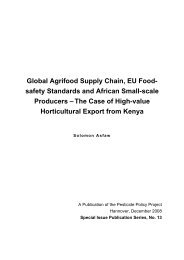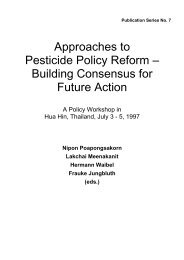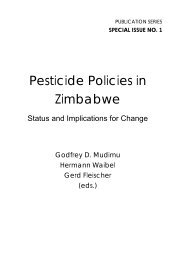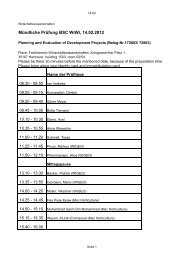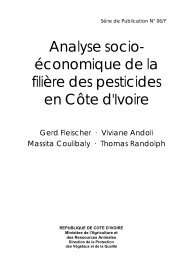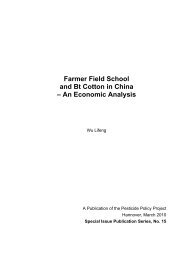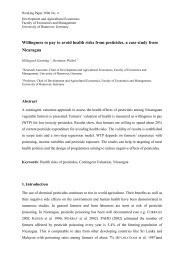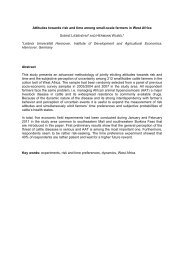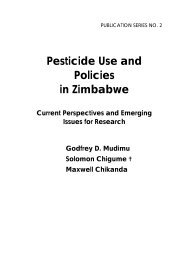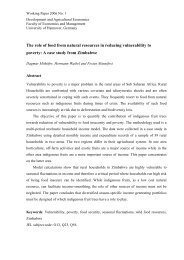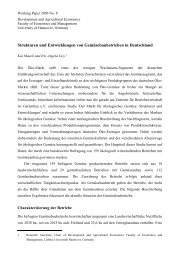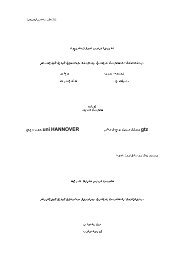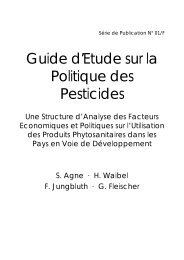PPP Special 08 - Institut für Entwicklungs- und Agrarökonomik
PPP Special 08 - Institut für Entwicklungs- und Agrarökonomik
PPP Special 08 - Institut für Entwicklungs- und Agrarökonomik
You also want an ePaper? Increase the reach of your titles
YUMPU automatically turns print PDFs into web optimized ePapers that Google loves.
9<br />
Karnataka is predominantly rural and agrarian and more than 71 per<br />
cent of the population 4 is engaged in agriculture. Hence, agriculture<br />
plays an important role in the state’s economy and contributes about 28<br />
per cent to the domestic product (Karnataka State Department, 2000).<br />
The total geographical area of Karnataka is 19 million hectares and 64<br />
per cent is used for agriculture of which less than one fourth is irrigated.<br />
Cotton is grown as one of the major cash crops but the production has<br />
been constrained by especially low rainfall during the last three years<br />
(see Figure 2.2). Only 35 per cent of cotton is grown with supplementary<br />
irrigation.<br />
Figure 2.2 shows average yields of lint cotton in five-year intervals<br />
between 1955 and 1999.<br />
Figure 2.2:<br />
Area and yield 5 of cotton in Karnataka<br />
1200<br />
300<br />
1000<br />
250<br />
Area [mill.ha]<br />
800<br />
600<br />
400<br />
200<br />
150<br />
100<br />
Yield [kg/ha]<br />
200<br />
Area<br />
Yield<br />
50<br />
0<br />
1955-60 1961-65 1966-70 1971-75 1976-80 1981-85 1986-90 1991-95 1996-99<br />
Source: Karnataka State Department 2000<br />
The cotton area decreased over the last ten years since farmers shifted<br />
to other crops like maize and sugarcane. The cotton yield of 212 kg lint<br />
0<br />
4 See Appendix for districtwise population and area.<br />
5 Fiber Cotton (about 1/3 of Seed Cotton)



